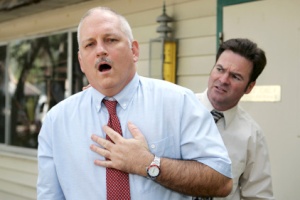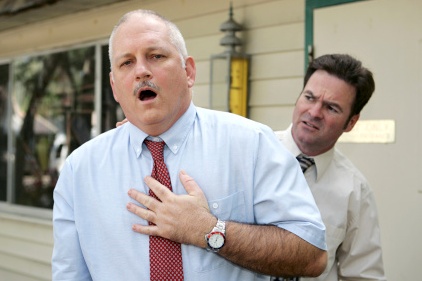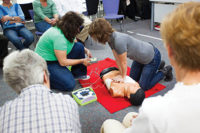 1. Educational institutions: Sudden Cardiac Arrest (SCA) claims more than 250,000 lives per year, regardless of age. With incidents increasingly happening on school properties, including athletic fields and courts, the need for AEDs in educational institutions is on the rise. Placing an AED unit near gymnasiums, cafeterias and other high-traffic areas and training key staff members such as the nurse or athletic trainers will ensure your school is prepared.
1. Educational institutions: Sudden Cardiac Arrest (SCA) claims more than 250,000 lives per year, regardless of age. With incidents increasingly happening on school properties, including athletic fields and courts, the need for AEDs in educational institutions is on the rise. Placing an AED unit near gymnasiums, cafeterias and other high-traffic areas and training key staff members such as the nurse or athletic trainers will ensure your school is prepared.
2. Office complexes: Each year, about 10,000 people fall victim to cardiac arrest while at work. Installing one or more AED units on each floor of office buildings allows employees to offer help quickly, without needing to rely on stairs or elevators to reach a defibrillator.
3. Fitness centers: SCA usually strikes suddenly and without warning, and can even occur during a healthy routine such as exercising. According to a 2011 study, bystanders and AED placement were related to improving overall survival rates in exercise facilities. Currently eleven states mandate AEDs for health clubs, and each year at least three additional states consider doing so.
4. Foodservice operations: Choking is another potential cause of cardiac arrest, and a relevant concern given that the average U.S. adult dines out for nearly five meals per week. Thus, restaurants should have an AED on site in a place accessible to staff and diners.
5. Hotels and Casinos: Because cardiac arrest occurs suddenly and without warning, it is not uncommon for individuals to experience SCA while away from home. Guests and visitors to hotels and casinos will be able to relax and enjoy your property when they know it is equipped to handle a SCA emergency.
6. Retail stores/shopping centers: Retail stores and malls are crowded and sizable gathering places for people of all ages. Take precaution by selecting AEDs that lay-persons can easily use and install them in centrally located areas.
7. Construction sites: The construction industry reports the highest rates of electrocution, yet another cause of SCA. Thus, defibrillators are a must-have on job sites. Regularly check that units are in good working condition to prevent malfunction.
8. Manufacturing plants and warehouses: Manufacturing plants and distribution centers are complex facilities that often require physical exertion and may be prone to electrocution. With death from SCA typically occurring within minutes from when someone is electrocuted, having one or more AEDs on the premise is crucial for survival.
9. Transportation hubs: Airports, train stations and bus stations are some of the busiest public places and may make it difficult for paramedics to quickly reach a SCA victim. Multiple AEDs should be placed throughout with signage that alerts travelers of its presence.
10. Assisted living facilities: Increasing age is a primary risk factor for SCA. This makes senior centers and assisted living facilities a likely location for an SCA-related incident. Place AEDs throughout public areas such as dining rooms and throughout patient rooms to protect residents and visitors to the facility.
Cintas helps facilities implement their AED and training program. For more information about Cintas’s AED program, call 877-973-2811. For more information on Cintas first-aid and safety programs, visit www.cintasfirstaid.com.
Top 10 recommended facilities for an AED program



